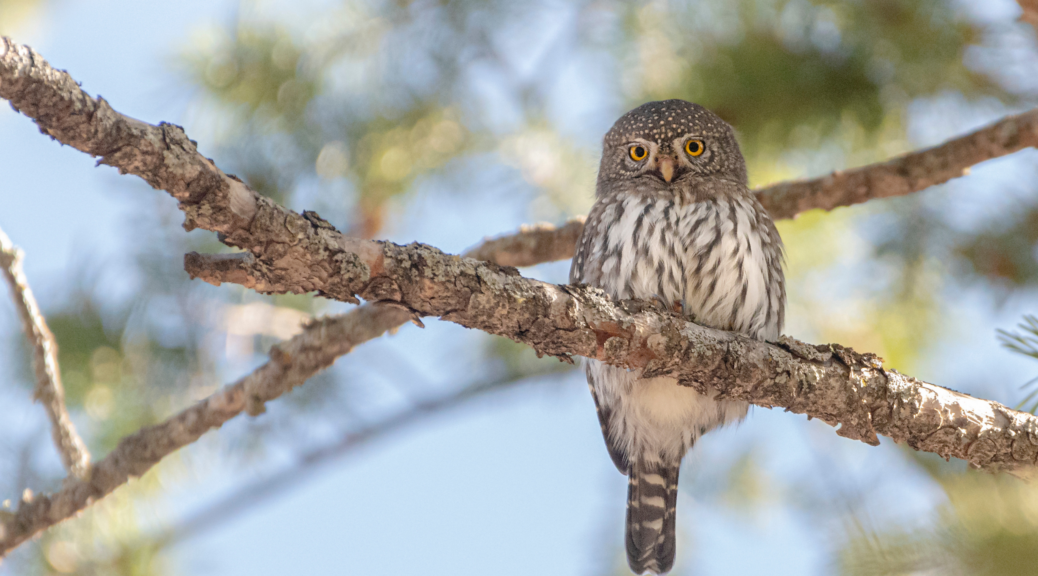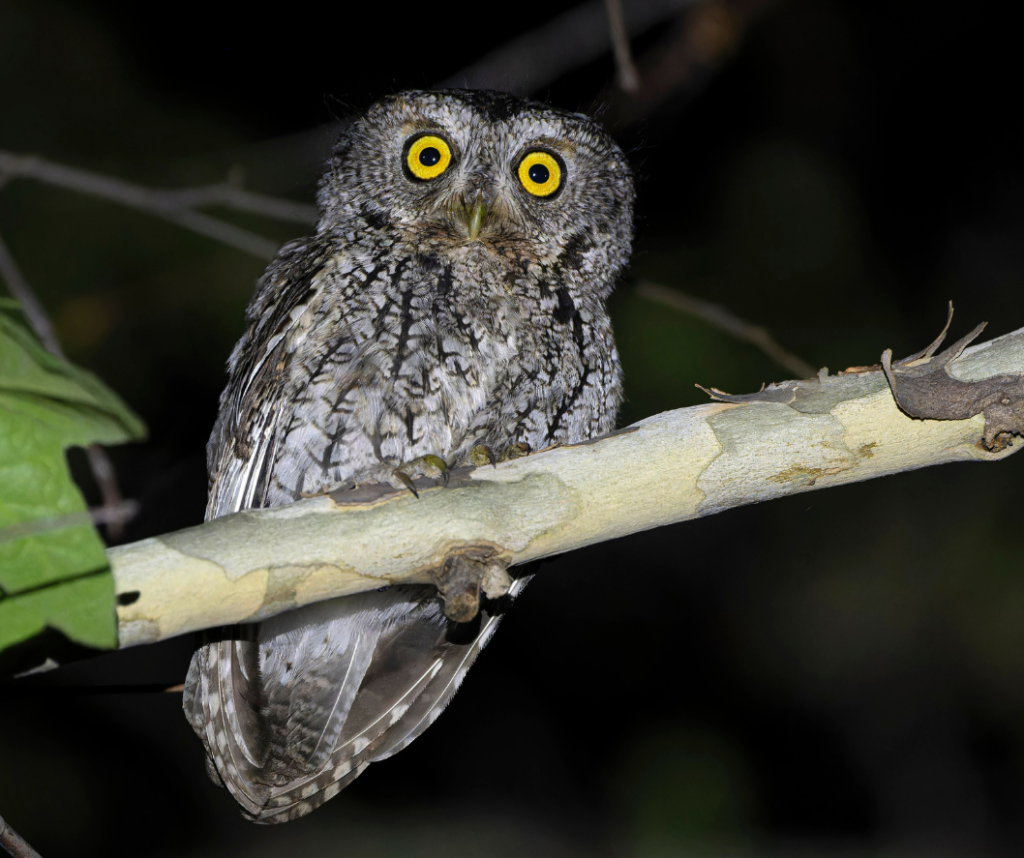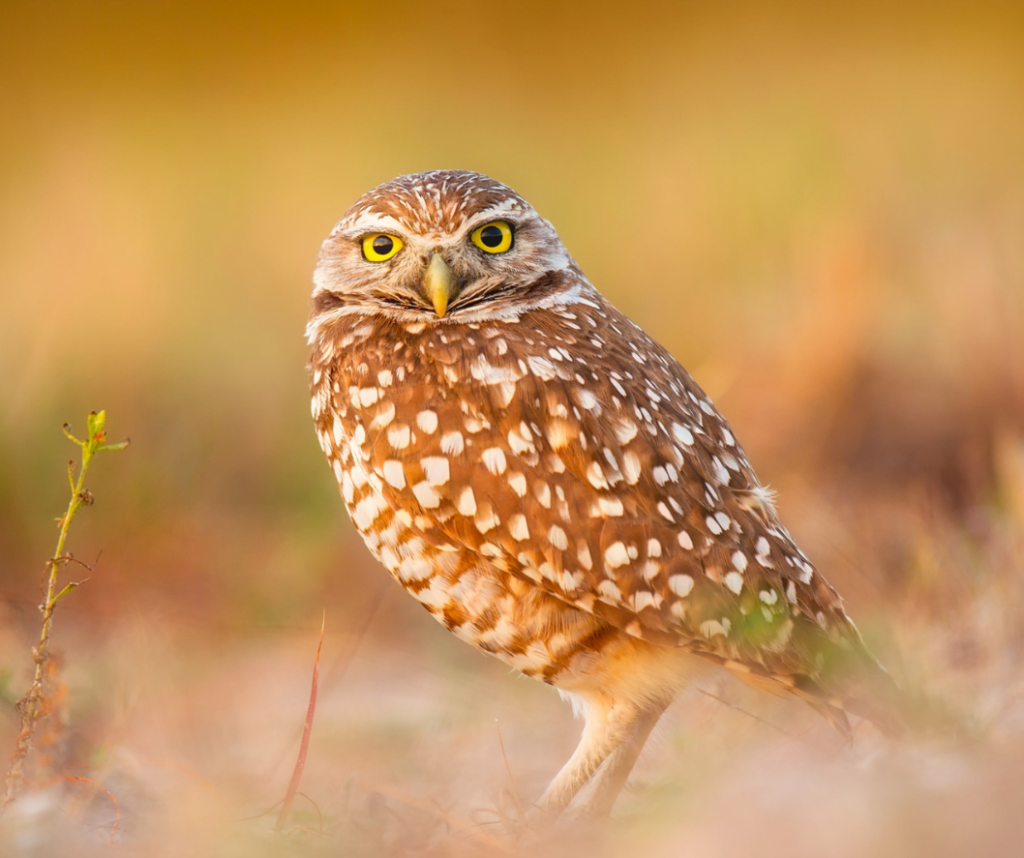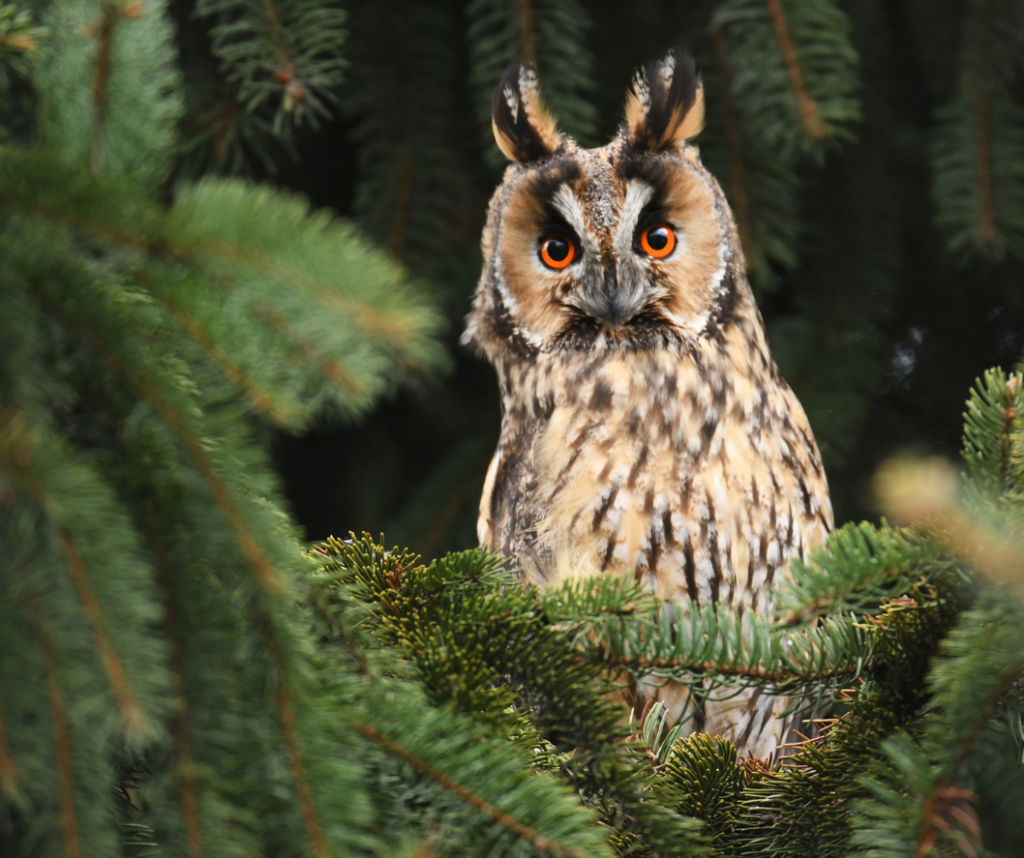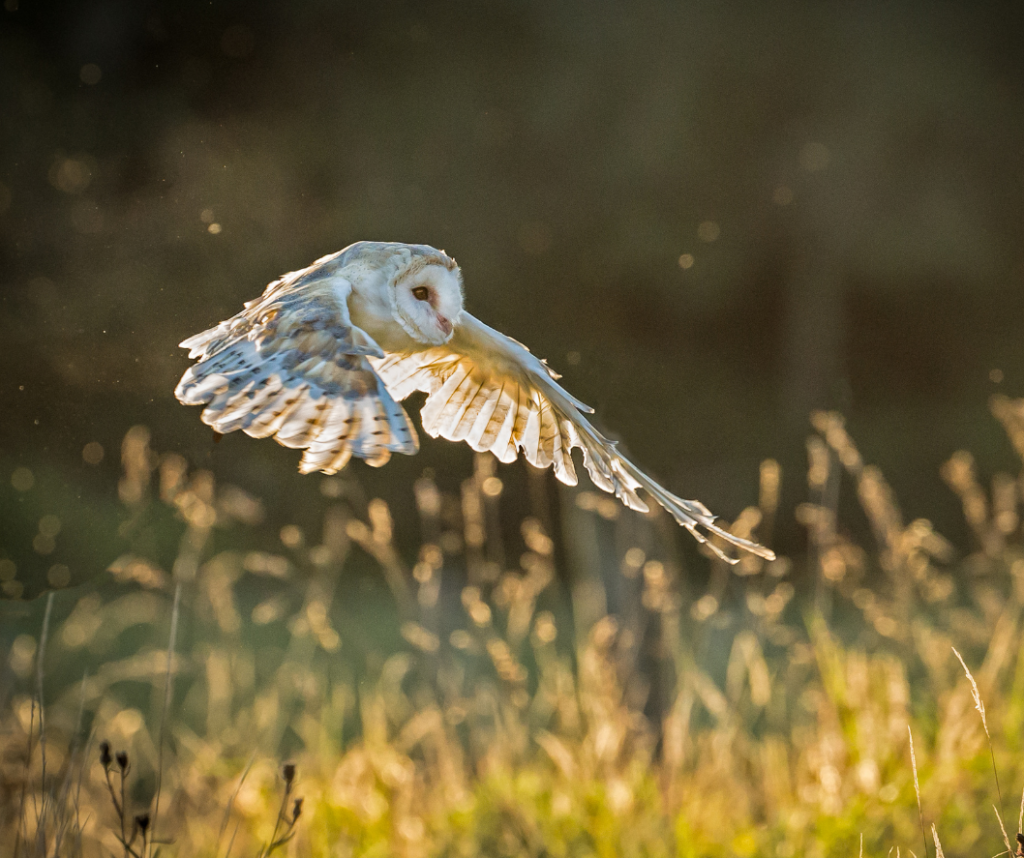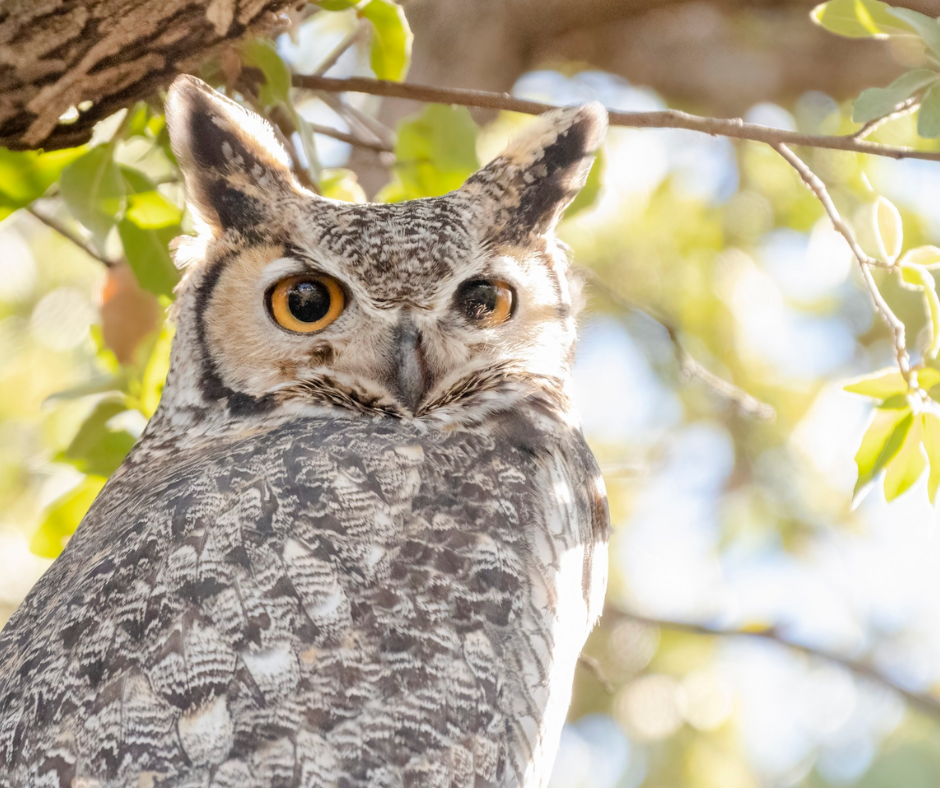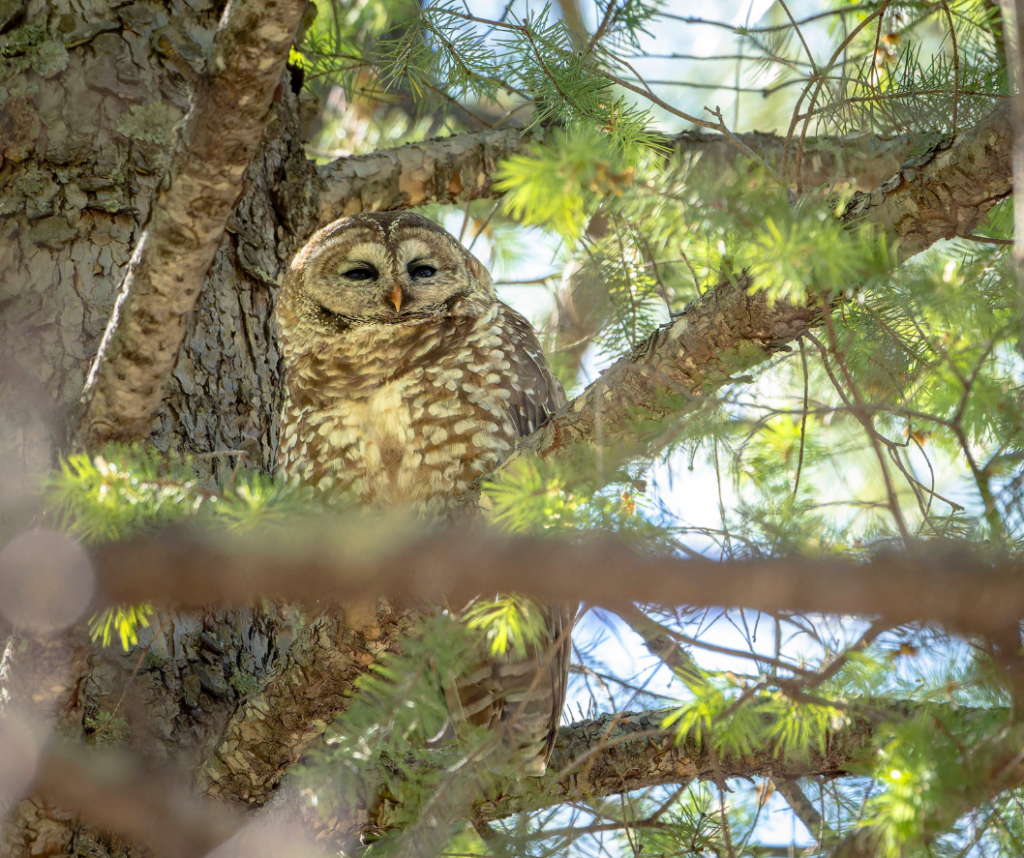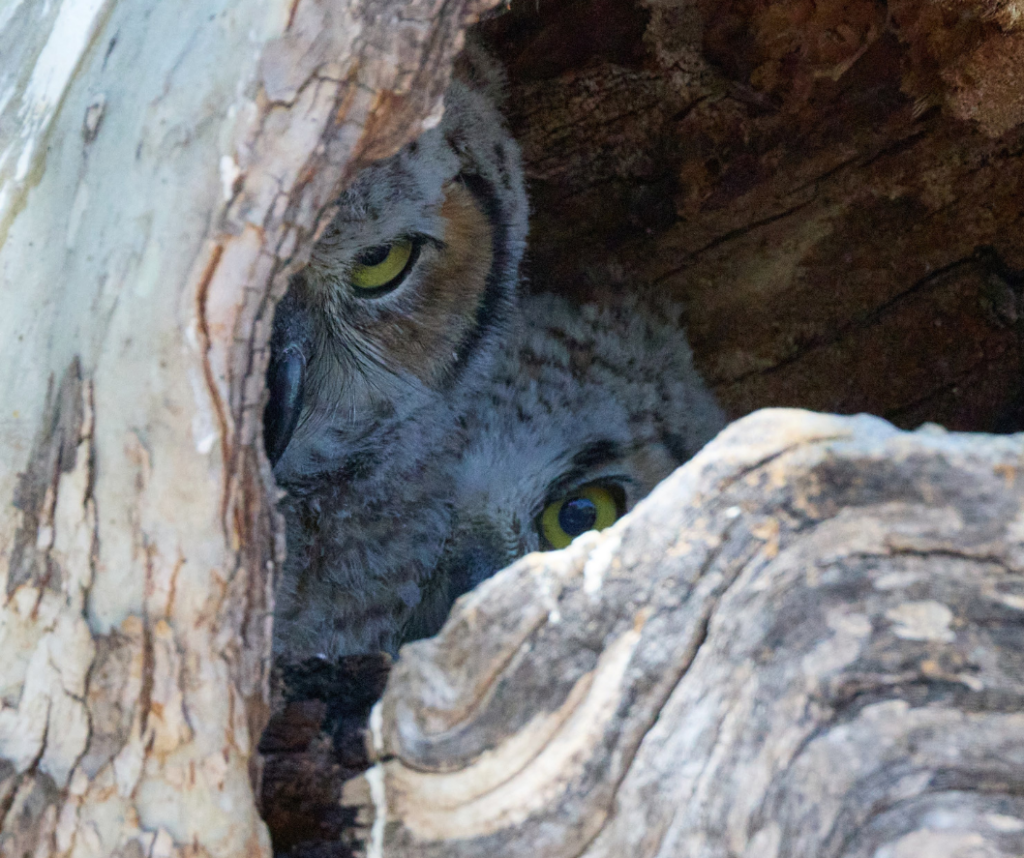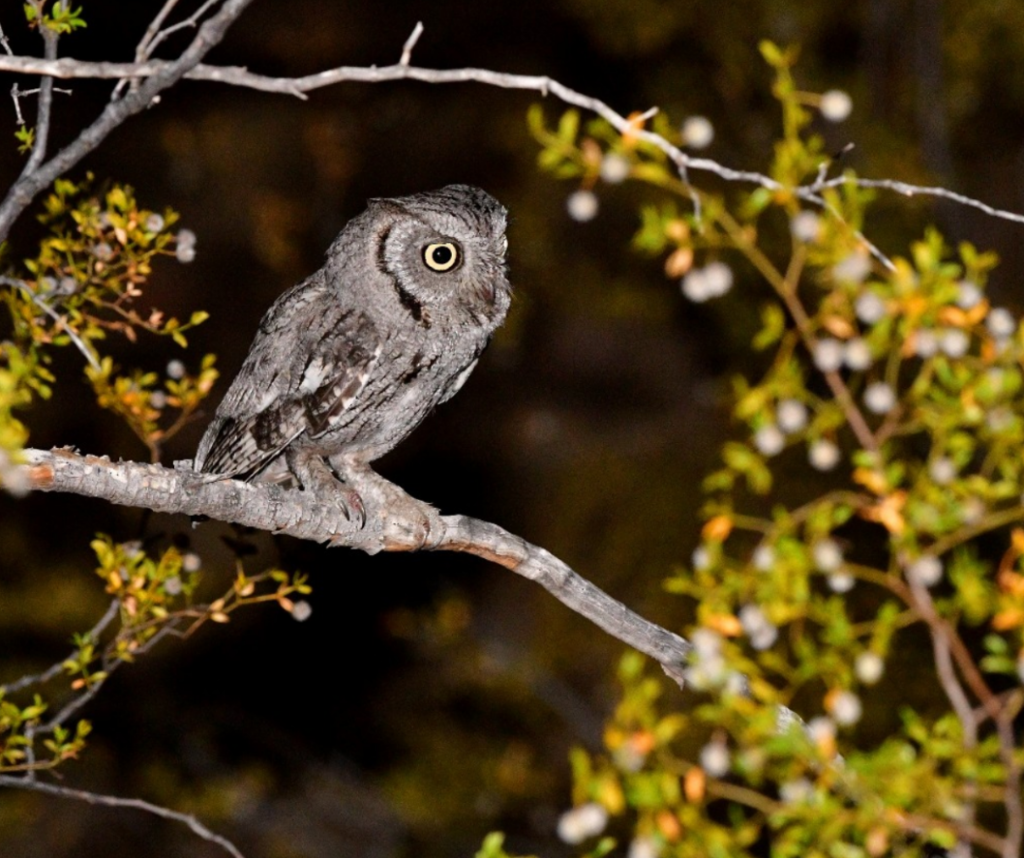Your guide presses a finger to her closed lips and the adventure begins. You follow her in silence as she leads your group into a dark forest that seems like the setting for a fairytale. Moonlight slips through tree branches, illuminating a path. When a shape shifts among the shadows, you stop to stare. Your guide calls into the dark, making. She makes a series of whistled hoots that speed up, like a dropped ball settling on the ground.
Silence.
Your guide calls a second time. Again, silence.
When your guide makes another series of hoots, this time there is an answer in the forest. Moving from shadows into the moonlight, a bird appears. Its wings flap with a brushing sound so subtle you aren’t certain you heard it. The owl glides in total silence and lands on a branch above you. Suddenly, the benefit of exploring the wilderness with a guide becomes clear. This moment, curated by expert naturalists with a keen understanding of the ecosystem around them, is unforgettable.
You will recall the large eyes blinking among the branches. You will remember how these inhabitants of a dark world were illuminated by the guide’s spotlight, their bodies glowing as they glided past you and vanished. Whenever you glimpse a forest at night, you will know it is filled with life that stirs when the sun disappears. You will listen for owls, and you may even call back to them.
An Evolved Species
Evolution has equipped owls with fascinating adaptations. Velvety feathers with serrated leading edges enable silent flight, minimizing turbulence and dampening noise. Owls can swivel their heads up to 270 degrees, a feat facilitated by their unique neck structure with extra vertebrae and ample blood vessels. The forward-facing orientation of their eyes provides powerful binocular vision, giving owls exceptional depth perception for hunting.
Owls’ hearing abilities are equally extraordinary. The strategic placement of ear openings at different heights allows sounds to reach each ear at slightly different times, aiding in precise prey localization. The circular arrangement of feathers that forms an owl’s facial disc funnels sound to the bird’s ears, enabling the hunter to detect subtle movements. An owl knows when a mouse is sneaking through grass or a vole is tunneling beneath the snow.

Northern Saw-whet Owl
Owl Prowls in the United States
Those lucky enough to experience an owl prowl report feeling intensely alive and closely connected to nature. Fortunately, you don’t need to travel far to find awe-inspiring owls.
The United States is home to 19 owl species, each among the most magnificent birds on Earth. Prowling for them, whether in deserts of the Southwest during spring or in snow-buried boreal forests in winter, provides a fulfilling adventure not far from home.
Owling in Southeast Arizona
Many Naturalist Journeys’ travelers have enjoyed superb owling. Take for example the Southeast Arizona: Spring Sky Island Sampler Tour. In May of 2023, the group encountered a whopping seven owl species. During nighttime owl prowls, the group spotted a Whiskered Screech-Owl, while Western Screech-Owls hooted their bouncing ball song.
A spotlight illuminated a ghostly Barn Owl hunting over a field. In a sycamore tree, the group observed a Northern Pygmy-Owl, featuring false eyespots that confuse prey and predators alike. Spotted Owls were heard and seen roosting. Baby Great Horned Owls, near fledgling, jostled in a nest cavity in Portal, where Naturalist Journeys has its headquarters. Finally, the group was treated to great views of the world’s smallest owl, a raptor no larger than a sparrow, the Elf Owl.
Naturalist Journeys hosts guided tours in Southeast Arizona all throughout the year. Discover the bustle of spring migration, a rainbow of hummingbirds, wintering Sandhill Cranes and even a pair of resident Elegant Trogon along the way. And, of course, owls galore!
Learn more about Arizona’s Sky Islands here.
Minnesota’s Winter Wonderland
In February of 2025, participants on the inaugural Minnesota: Winter Owling Tour will search for Snowy, Great Gray, Northern Hawk, and Boreal Owls.
During these winter owl prowls, you can look for Snowy Owls, their pale plumage camouflaging their bodies. Their feathered feet are like fluffy slippers that insulate their skin from cold snow.
The Great Gray Owl that haunts the forests of the north is among the world’s largest owls by wingspan and body length, but weighs a mere two and a half pounds. Though this owl seems like a big ball of feathers, its powerful body can punch through hard-packed snow to snatch prey.
The Northern Hawk Owl is another impressive hunter of boreal forests. It has a distinctly long tail and behaves more like a hawk than an owl. While perched atop solitary trees in daylight, this predator can sight prey up to a half mile away.
The elusive Boreal Owl is also a sit-and-wait predator that hunts from perches. But it listens at night for creatures scurrying on bare forest floor beneath trees and tunneling through snow. This small owl with a square head peers through giant yellow eyes into the dark.

Short-eared Owl
Endless Opportunities
Optional owl prowls add intrigue to several other US tours. From seeking a Great Gray Owl in Yellowstone National Park, to searching for Great Horned Owls on a Kansas tallgrass prairie, to prowling the ponderosa pine forests of South Dakota’s Black Hills, venturing into the night world can be as exciting as traveling to an unknown country.
The nocturnal wilderness awaits, and the owls are calling.

